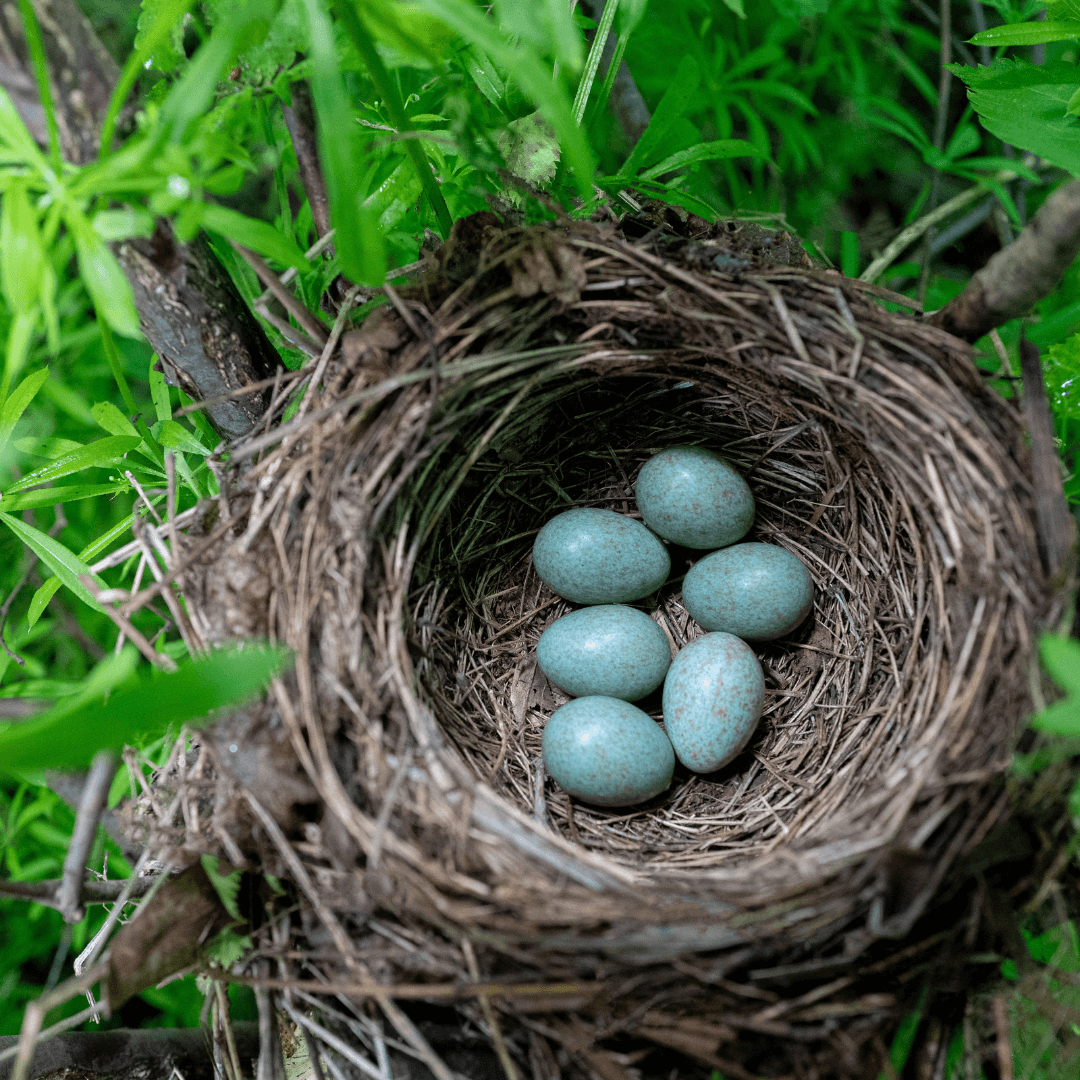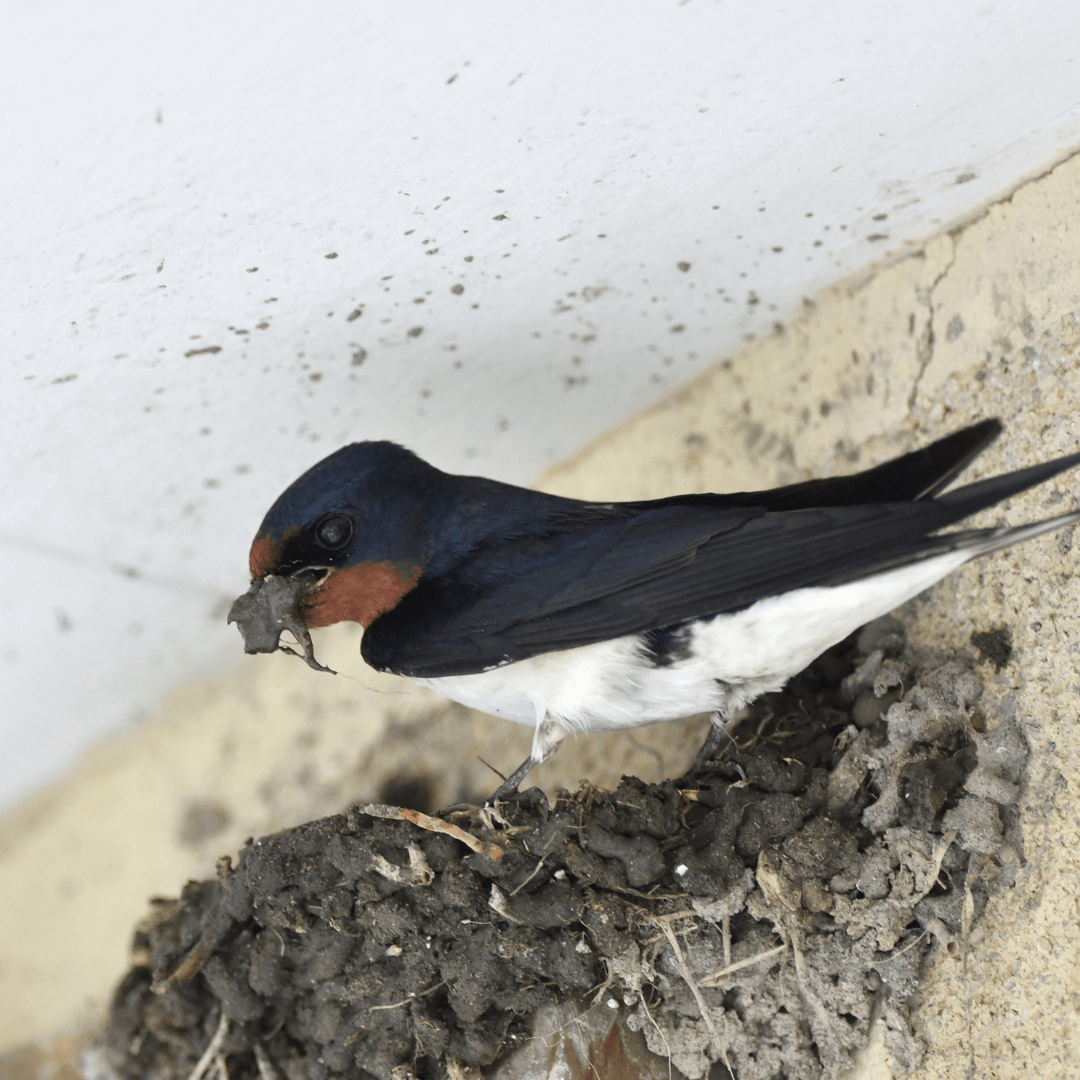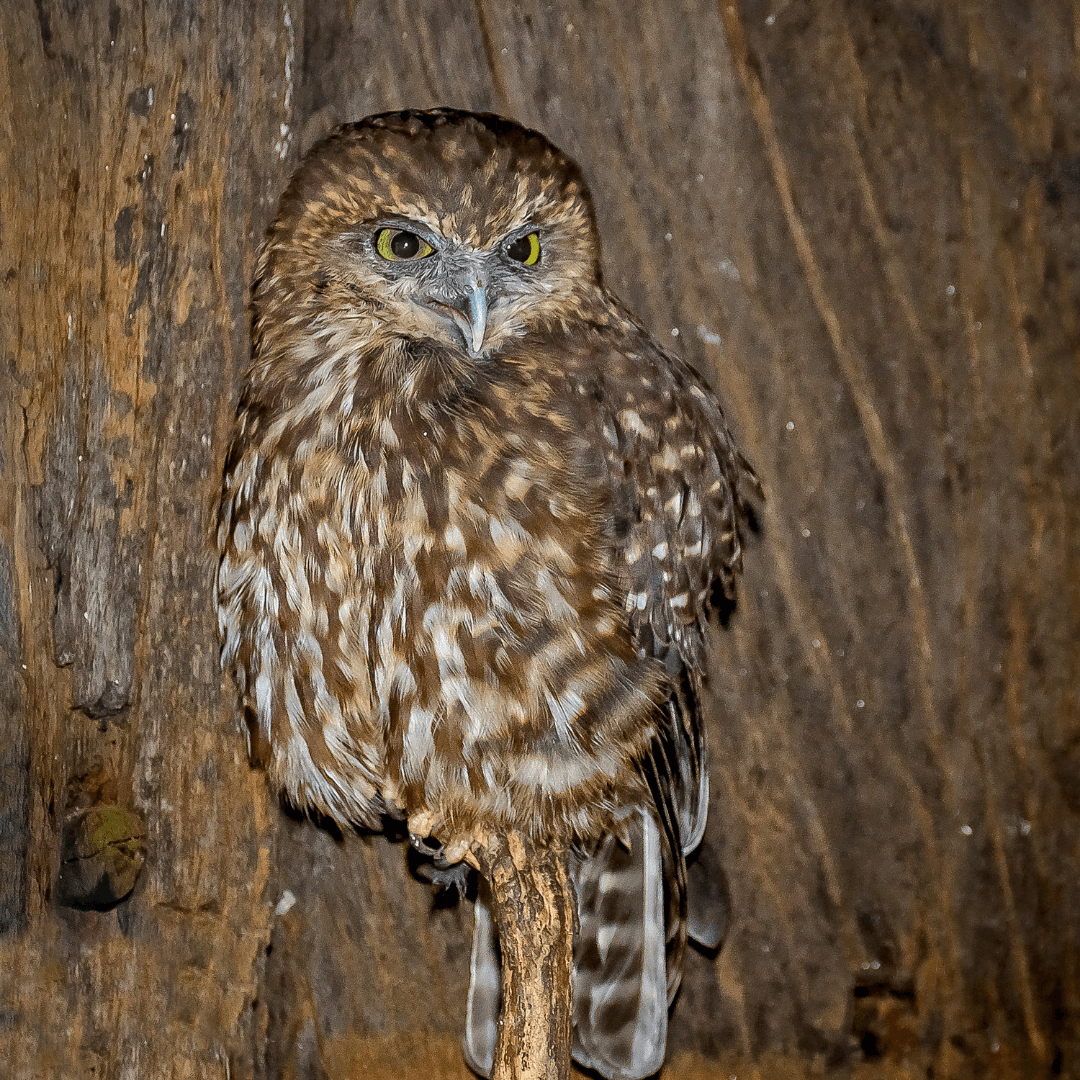How do NZ birds build their nests?
Nests are complex constructions that are unique to each bird species.
Spring is an exciting time for our NZ garden birds as they prepare to bring the next generation of birdlife into the world. There is a lot to do, find a mate, defend their territory and build their nests.
Nests are complex constructions that are unique to each bird species. But just how do they manage to make such structures with just their beaks? Especially as they only get a few days to practice each year.
We know that birds instinctively know how to build a nest. And we know that as birds get older and get more practice their nest-building gets better. But how do they do it?
The Planning Process.
Most NZ garden birds will have been scoping possible nesting locations long before the start of spring. They will be looking for a safe spot that preditors can't reach, or is well concealed. They will want to be close to a food source but not too close as they don't want other birds in their territories.
Once a suitable location has been found then the building process will begin. And at the beginning of spring, you are highly likely to see birds looking around for suitable building materials, or even flying overhead carrying things to start the build.
The start of the nest-building process.
Depending on the type of bird, and their nest preference, birds will start their nests in different ways:
Some birds will start with dropping sticks from a height onto their favoured branches. Of course, it's a bit hit and miss as lots just fall through, but they only need a few to lodge firm to help them start securing other items to form the basis of their nest.
Other birds will carefully and painstakingly wedge twigs between branches to build upon or to use as anchors to hang their nests down from.
And some birds will start their construction by using mud as cement to stick materials to.
Once the nest is started birds will use their beaks to entwine their materials together, slowly turning as they go to give them the neat smooth shape on the inside. Some use spiders webs or even their saliva to help hold the nest together, these also provide some flexibility and add strength. Others will line the nest with mud. But most will also use soft linings that will help keep the chicks comfortable and warm. Feathers, hair, moss and soft grasses seem to be favoured.
Common NZ Birds Nests found in gardens
Different bird species have different preferences for the type of nest they will build:
Blackbird (Manu Pango) Nests
The common Blackbird and Song Thrush will make a cup-shaped nest. Their nest is made with small twigs, grasses and moss. They often also use bits of plastic and other bits of rubbish they find. Then they line the inside with mud into a smooth shape before adding a soft lining.
The NZ Fantail also has a cup-shaped nest, often with a long tail underneath, it's thought this is to help disguise the nest amongst the branches. They use a lot of fine materials woven heavily with spiderwebs. They like to use moss, dried rotten wood, dried grasses and bits of ferns.
House Sparrow (Tiu) Nest.
The Sparrow will have an untidy nest built with a domed roof and a hole in the side. They often will nest in buildings or on manmade structures.
The Welcome Swallow use mud to start their nest which they mix with small grasses and form into a shelf that they sand on while constructing the rest. They build from the bottom up and line their nests with soft feathers and fine glasses. They will often build their nests in the eaves of houses and other manmade structures.
New Zealands' endemic Grey Warbler tends to build its nests in trees that have small leaves to help with camouflage to help avoid the Shining Cookoo, you can find out why in this Kohab Instagram post.
Their nest hangs down from a branch and are enclosed with a small hole on the side. They line their nest with hair, feathers or wool.
The Sacred Kingfisher does things quite differently. They will nest in a cavity in a mud bank, tree or cliff. They use their strong beaks to dig out a burrow and build their nest at the end. They start this process by flying at speed into the structure.
New Zealands' only endemic owl the Morepork will nest in a tree cavity, or in a simple scrape on the ground. They build a nest of loose twigs inside.
Support NZ Birds with a wooden birdhouse.
Environmental changes such as loss of natural habitat are having a huge negative impact around the world, but those effects are also being found in our local neighbourhoods. How many trees have been cut down in your area in the last few years?
One way you can support the NZ garden birds you kohabit with is to provide an alternative nesting environment such as a birdhouse. Kohab has a range of DIY birdhouses specifically developed for the NZ garden birds that will use one.
Ideal for birds that like a cup shape nest as they get a good view out. These will attract Blackbird, Song Thrush, Silvereyes and House Sparrows. They are also known to attract Grey Warbler and sometimes Tui.
Starlings use birdhouses that require an entrance hole. Starlings need a 45mm hole, this is big enough for them but not big enough for predator birds such as Myna Birds. Starlings will very happily use a birdhouse.
House Sparrows are another bird that loves a birdhouse. And they are very happy to nest close by to each other so a row of birdhouses works well for them, and looks great. They require an entrance hole that is much smaller than a Starling, a hole that is 32mm is just right for them.
Morepork Birdhouse
We hope to be producing Morepork nesting boxes in the future. If you are interested in buying a Morepork birdhouse please get in touch. Simply drop us a line here: info@kohab.nz
All our birdhouses have been specially designed to give safe, warm shelter to a range of regular visitors to NZ gardens. To find out more about how to choose the right birdhouse for your garden take a look at our blog: Kohab Life: How to choose a birdhouse
The best time to put up a birdhouse
The good news is there is never a bad time to put up a birdhouse. Birds spend many months scoping out a nesting site. So putting one up in the middle of winter still makes sense. And birds do use birdhouses in the colder months for shelter and to roost, find out more in our blog: Kohab Life: Winter birdhouses
We hope this guide has been of help. There are lots of other useful guides on our blog page Kohab Life or join our Instagram or Facebook for regular titbits of info about the common garden birds that kohabit with you in your New Zealand garden.














